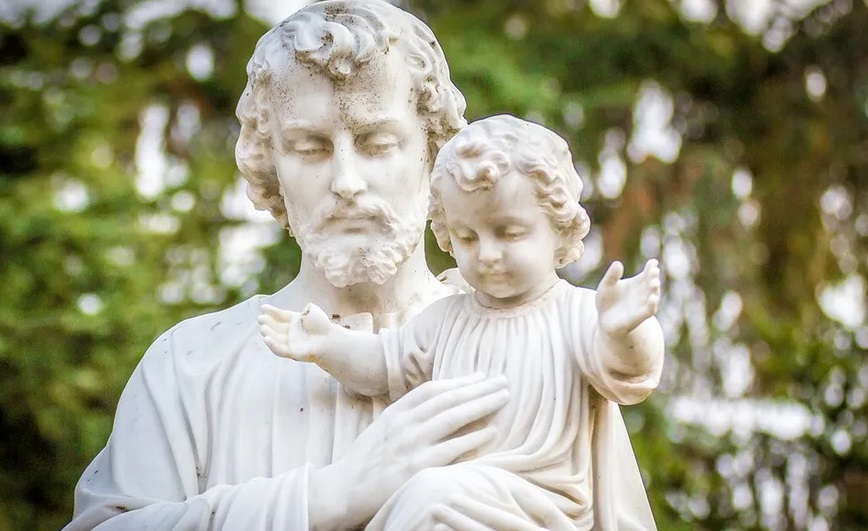Why do we celebrate Saint Joseph the Worker on May 1?
Saint Joseph enjoys the rare privilege of being celebrated twice: on March 19 as the spouse of the Virgin Mary and patron of the Universal Church, and on May 1 as the patron saint of workers.
May 02, 2024

By Geneviève Pasquier
It was in 1870 that Saint Joseph was proclaimed patron of the Universal Church, as well as patron of carpenters, joiners, and workers. Almost a century later, in 1955, Pope Pius XII instituted the Feast of Saint Joseph the Worker on May 1.
The Roman Martyrology describes Saint Joseph as the “craftsman, who as a carpenter at Nazareth provided for the needs of Mary and Jesus by his labor and initiated the Son of God into human work.” For this reason, he serves as the model and protector of Christian workers, who honor him on this day when Labor Day is observed in many countries around the world. It shows that Jesus Christ shared all aspects of human life: he lived in a family and learned to work with his father, Joseph.
What do we know about Joseph?
Little is known about Joseph, and in the Gospels, he does not speak. He obeys God and integrates Jesus into the life of his contemporaries.
Jesus’ divine lineage is jointly attributed to Mary and Joseph. Through Joseph, the evangelists Matthew and Luke trace Jesus’ genealogy as “son of David, son of Abraham” (Mt 1:1) and “son of Adam, son of God” (Lk 3:38). Inspired by a dream, Joseph names the child Jesus “and you are to give him the name Jesus, because he will save his people from their sins” (Mt 1:21).
Matthew reveals that he has a “home” (Mt 1:24) to welcome his family. Thanks to a second dream, he goes into exile in Egypt to protect Jesus from the cruelty of King Herod, who had ordered the killing of all newborns (Mt 2:13-14). Luke shows that he observes the law of Moses by presenting Jesus as every firstborn male must be (Lk 2:21-22) and by going every year to Jerusalem to pray at the Temple for the Passover feast (Lk 2:41). Along with Mary, he experiences the anguish of parents for their lost son and the admonishments they give him (Lk 2:48-51). He has a profession, to feed his family: he is a carpenter in Nazareth.
Why the feast of Saint Joseph the Worker?
In his 1989 apostolic exhortation Redemptoris Custos (“Guardian of the Redeemer”), St John Paul II writes: “If the Family of Nazareth is an example and model for human families, in the order of salvation and holiness, so too, by analogy, is Jesus’ work at the side of Joseph the carpenter. In our own day, the Church has emphasized this by instituting the liturgical memorial of St. Joseph the Worker on May 1. Human work, and especially manual labor, receive special prominence in the Gospel. Along with the humanity of the Son of God, work too has been taken up in the mystery of the Incarnation, and has also been redeemed in a special way. At the workbench where he plied his trade together with Jesus, Joseph brought human work closer to the mystery of the Redemption.”
Similarly, Pope Francis during his general audience on May 1, 2013, spoke of the dignity and importance of work, recalling the passage where the “Book of Genesis tells us that God created man and woman entrusting them with the task of filling the earth and subduing it, which does not mean exploiting it but nurturing and protecting it, caring for it through their work (cf. Gen 1:28; 2:15).” Work, he said, “is part of God’s loving plan” and that being “called to cultivate and care for all the goods of creation,” we participate in the work of creation.
In his 2020 apostolic letter Patris Corde (“With a Father’s Heart”) to celebrate the 150th anniversary of the proclamation of Saint Joseph as Patron of the Universal Church, Pope Francis proposed different ways to celebrate Joseph, prayers to discover or rediscover this May 1. --La Croix International







Total Comments:0